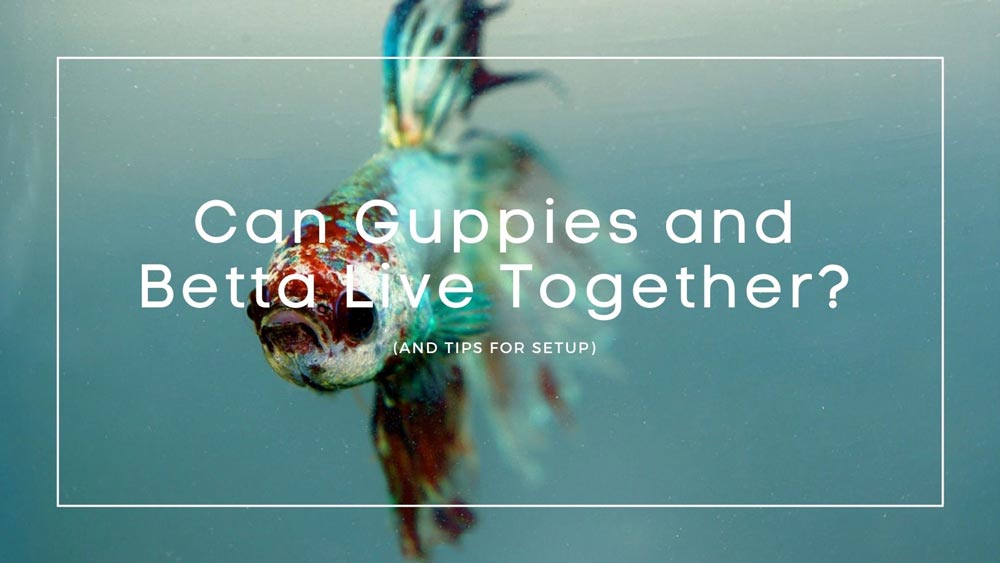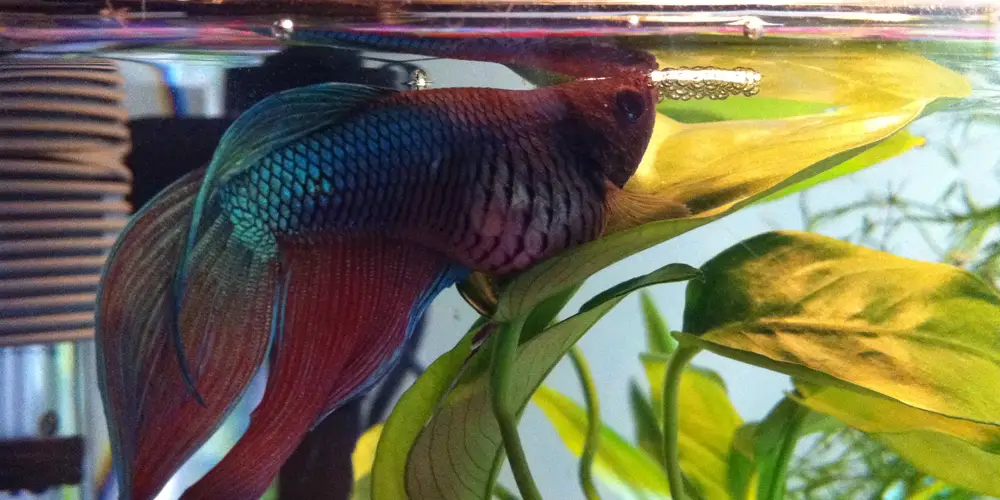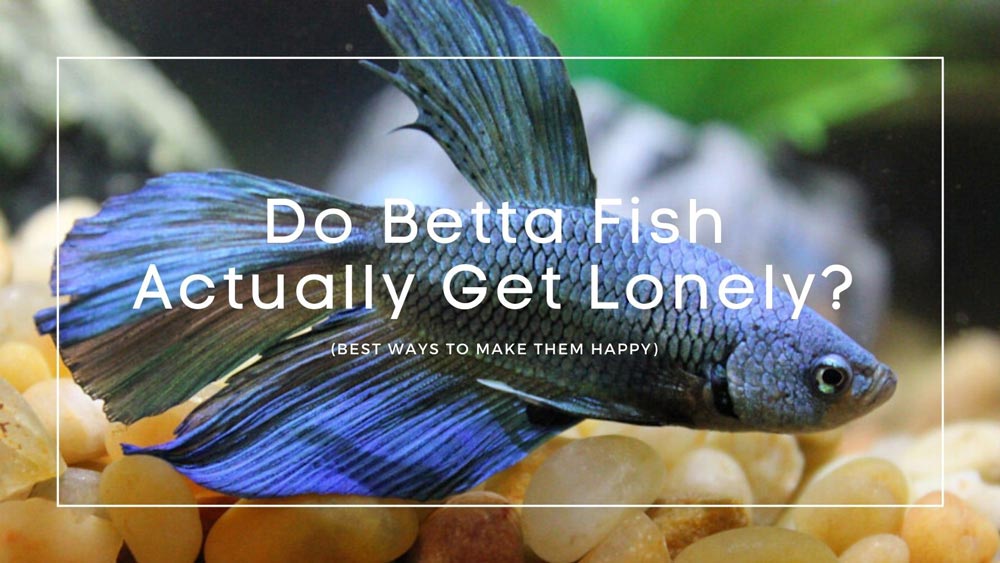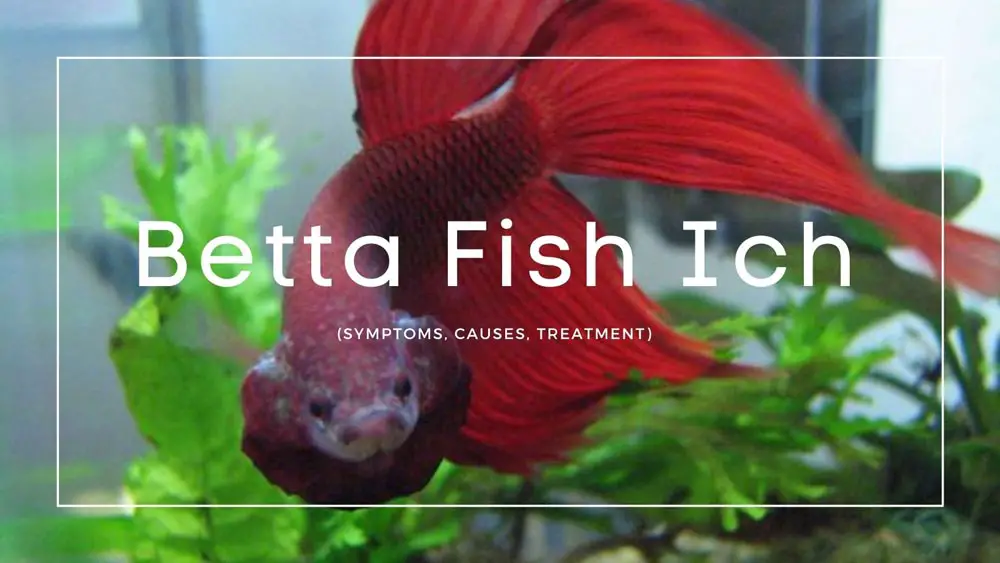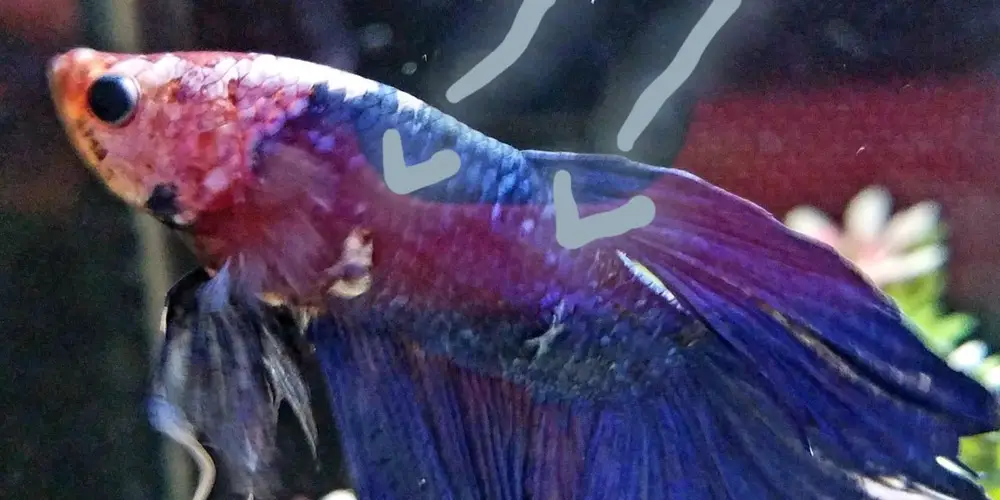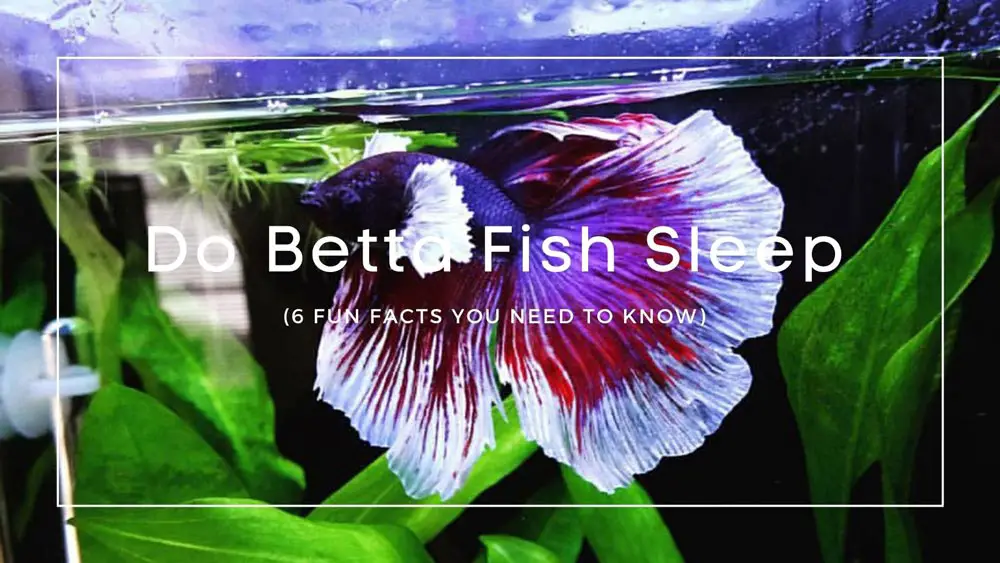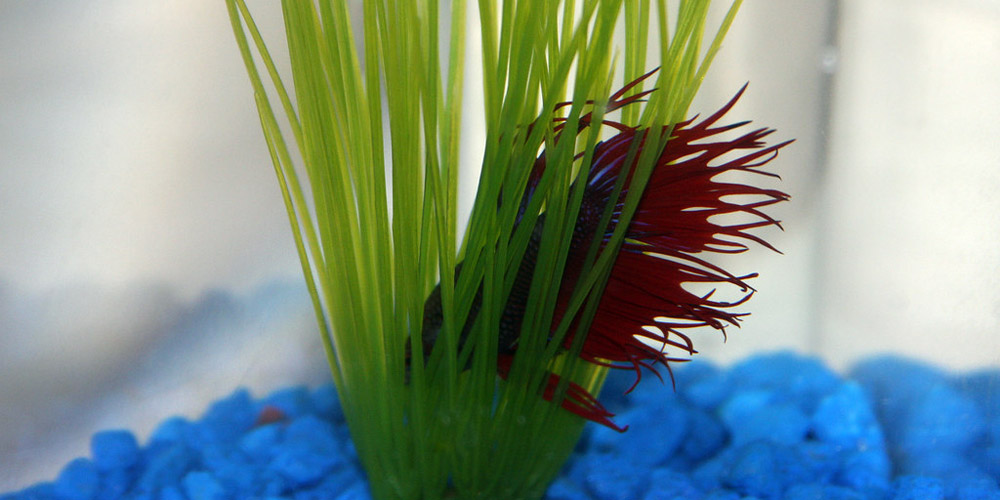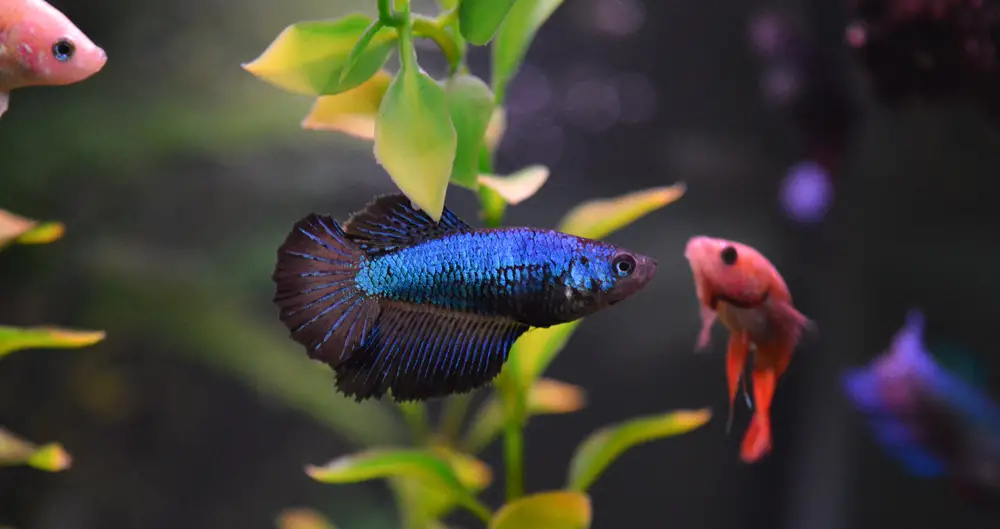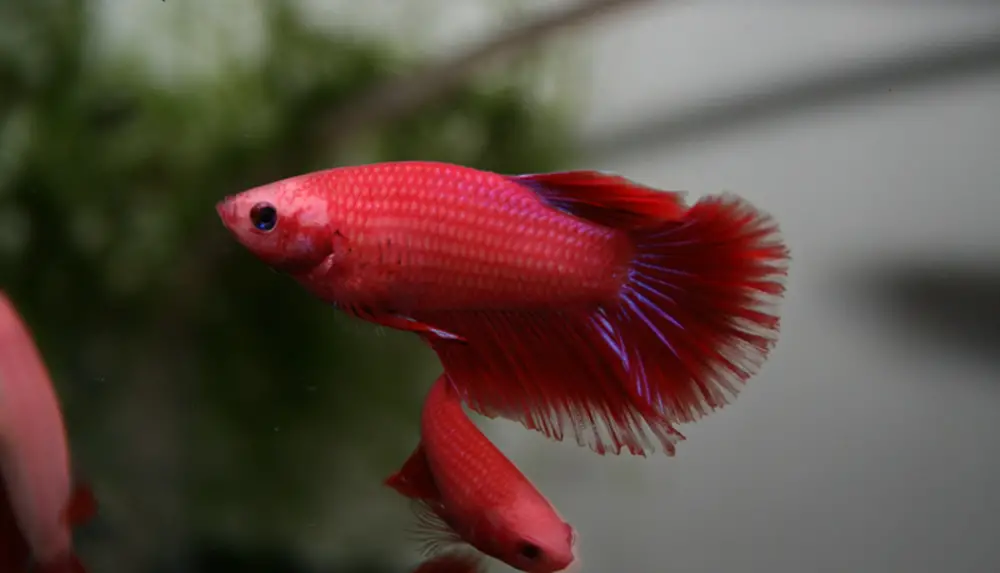Can guppies and betta live together?
Given the notoriously aggressive nature of guppies, some would argue that these two different types of fish are best kept apart. Yet given the numerous benefits of owing guppies, many still would like to at least try to bring them together.
Can Betta Fish Live With Guppies?
The truth of the matter is that in a broad sense, yes, it is possible for guppies and betta fish to coexist in the same tank. However, doing so requires keeping several things in mind. Even then, the science of putting guppies and betta fish together is far from perfect. You may want to prepare yourself for at least some trial and error.
Tank Conditions For Guppies And Bettas
First, let’s get the ideal tank for bettas and guppies out of the way. This will include ideal settings for both. Once you have these elements out of the way, we can discuss factors like gender, size, and even the best ratio of betta fish to guppies.
In a nutshell, guppies and betta fish have fairly differing requirements for comfortable water. Water hardness is determined basically by how many dissolved minerals are in the water. This includes magnesium, calcium, and others. Hard water, which guppies prefer, will have a lot of that stuff. The pH is going to be somewhere in the range of 6.8 to 7.8.
Their thriving temperature range is between seventy-four-and eighty-two-degrees Fahrenheit. Guppies come to us from lakes and rivers throughout South America. While these requirements are important, the hardiness we mentioned before is going to give you a little wiggle room.
With bettas, we are talking about fish that traditionally like comparatively softer, more acidic waters. Originating from Southeast Asia, where you can find them in such places as streams and rice paddies, betta fish have an optimal pH of 7. Their ideal temperature is between seventy-eight and eighty.
What does this mean? Two things. One, betta fish have a lot less flexibility with these factors than guppies. Two, even with those figures in mind, there is still clearly a sweet spot in which both guppies and betta could theoretically live together comfortably. Furthermore, bettas are considered moderately resistant and adaptable. They can generally get used to harder water.
The following filtration levels are considered perfect for tanks with both of these fish:
- 0 PPM (Parts-Per-Million) Ammonia
- 0 PPM Nitrite
- 20 (Maximum) PPM Nitrate
A water testing kit will help you stay on top of this.

The Ideal Tank And What To Put In It
One thing guppies and bettas have in common? Overcrowding will stress them OUT. To that end, you’re going to want a fish tank that’s at least 10 gallons. Our recommendation would be for something larger than that 20 gallons for a fish tank is probably best.
With 20 gallons, or even larger tanks, you’re ensuring there will be plenty of room for your bettas and guppies to cohabitate successfully.
Also, while guppies do not jump out of open tanks, betta are notorious for doing this. You will need a secured lid for your tank. This will not be an issue for the guppies.
In terms of what you should put inside your tank, beyond the perfect water, remember that guppies like things like black substrate, rocks, and live plants. Guppies and betta each like to hide sometimes. Plant life not only recreates the environment of guppies, but it also beautifies the tank.
Ultimately, both guppies and betta need a rich plethora of live plants to be healthy and happy. There are a ton of great options out there, when it comes to the best live plants for guppies and more.
Plants can also help to keep the peace. A rich array of examples can prevent bettas from ever really becoming interested in guppies. Java ferns, guppy grass, and watersprites are all nice ideas to consider.
Now, with your tank and water requirements taken care of, we can focus on the fun part: Buying the fish!
Choosing The Right Guppies
We’re going to focus more on how to choose the right betta fish, as opposed to your considerations with guppies. The reason for this is simple. A tank of guppies is simply easier to establish, before you make the decision to add betta fish. While you can try to throw them all into an ideal tank together at the same time, this could blow up in your face.
The best way to go is to establish a guppy tank using the considerations for bettas highlighted above. Once you’ve created a comfortable place, you can begin to add your bettas. Male guppies can stress out the females with their mating aspirations, which can lead to problems. The idea ratio for guppies is generally seen as two females for every male. You definitely want more females than males, at the end of the day.
Male guppies also have a tendency to be the more colorful of the two genders. Such colors can look lovely in the tank, but they can also stir aggression in betta fish. This is particularly true of male betta fish. In other words, male guppies and male betta fish are just about the worst combination possible. Both are aggressive. Both can cause problems if left alone with each other.
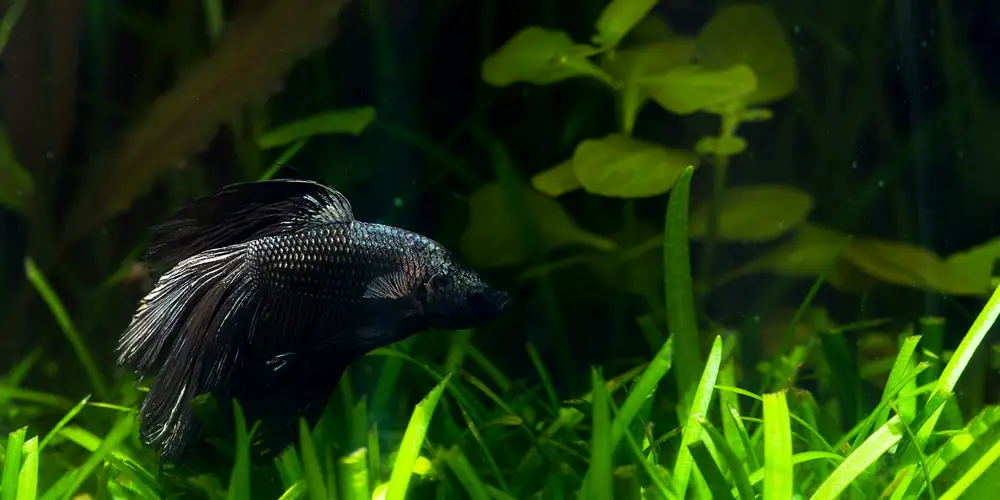
Choosing The Right Bettas
The truth of the matter is that betta fish are not quite as aggressive as a whole as some claim. Semi-aggressive would be a better way to put it. This subject can be further elaborated on by understanding aggressiveness in terms of betta breeds and genders.
Yes, some betta fish breeds are more aggressive than others. For a cohabitation tank with guppies, this is a vital consideration. Delta betta fish and halfmoon betta fish are both examples of less aggressive breeds. Start there.
Also, there should obviously be a limit on the number of bettas that are living in the tank with the guppies. Even the less-aggressive betta fish breeds can still have issues in this arena, both with each other, as well with any other types you have in the tank.
While one single betta fish can still be a problem for the guppies, particularly in terms of biting fins and bullying behaviors, this is considered the best number for a combination tank. Because the male bettas are generally more aggressive than the females, the idea ratio will then be one female betta to your male/female guppy ratio.
Mixing Guppy And Betta Genders: Dos And Don’ts
Remember you also want more female guppies than male. In fact, unless you want to breed at some point (which can present its own problems in a tank shared by these two types), you may want to consider a tank of all female guppies and all female bettas. Female bettas aren’t as aggressive as males, but you also have a guppy gender with the lowest possible likelihood of triggering any aggression in females.
If you’re committed to keeping male guppies in the tank, consider feeder guppies over the fancy ones. These tend to be duller in appearance and smaller, which eliminates two big triggers for aggression in bettas.
Can Guppies Eat Betta Food?
This is another important area. Not all fish food is alike. Relying on one product to feed both can be problematic at best.
The betta fish is a carnivore. This means you’re going to want to give them meat products with lots of yummy protein. Insects, worms, or even smaller fish (which is why it’s a bad idea for a prospective breeder to keep guppy fry and bettas in the same tank) are all the types of things you should focus on.
Your feeding schedule for bettas should be roughly once per day. Some owners prefer to split up a daily serving into two portions at different points in the day. Rotate different betta fish food products to give them an ideal variety.
You should also consider feeding your guppies first. Why? Because guppies are omnivores. They can eat the betta fish meat products, and they will. Unfortunately, these meat products are not going to give them everything they need for optimal nutrition. You should be feeding guppies veggie-based products at least once per day.
Give your guppies the veggie pallets first. Chances are, the bettas will not touch that food. Once you’ve fed the guppies, you can give the bettas their food. The guppies will still steal the food, which can lead to a long list of problems associated with overeating. The smart way to get around this is to use something like a pipette to make sure the bettas are getting the food that’s meant for them.
Guppies are also known for eating the algae in your tank. This is another one of the benefits that people like about them.
Important Care Tips For Guppies And Betta Living Togethe
You now have a lot of the basics down, when it comes to how to create the perfect fish tank for guppies and betta.
Let’s wrap things up with a few general tips and ideas that we couldn’t cover in the text above:
Be wary of diseases which can impact both
For example, ich/ick is a parasite which can make both bettas and guppies deathly ill. Stress is the biggest cause of this condition, which is notable for creating a rash of white spots on either fish. Thankfully, there are lots of ich treatment products out there. Furthermore, poor tank conditions can also lead to fin rot.
Get a second tank
This one can be a little smaller than your main purchase. The main benefit of a second tank is that if something goes wrong with bringing bettas and guppies together, you can move one to your secondary with ease.
Don’t want to get a second tank?
Keep in mind that tank dividers are available. Using such a divider safely and correctly is highly dependent upon having a large enough tank. This is why most experts insist on a tank of at least twenty gallons.
While your main concern might be on how the betta are going to treat the guppies, remember that the guppies can do things like snatch their food and nip on their fins. Should this happen, you’ll want to find and isolate the guppy causing the problem.
Remember that because of the specific tank conditions required for both guppies and bettas to be happy together, certain fish (such as many tropical examples) are not going to be suitable for your tank at all.
While less social and flexible than guppies, bettas still have the potential to live comfortably and happily with many other types of fish. Check out this YouTube video for a few examples of the different types of fish that can be tankmates with bettas. You are not limited to guppies by any means.
Conclusion
It almost goes without saying that you’re going to want to keep a very close eye on your tank, after you’ve moved the betta(s) in with the guppies, or vice-versa. If the betta has a good temperament, regardless of gender, it will probably do just fine.
If you choose to add additional guppies or betta to your tank, remember everything we covered about aggression triggers, gender, and ideal ratios.
With a little effort, you can absolutely create conditions suitable to guppies and bettas simultaneously.
